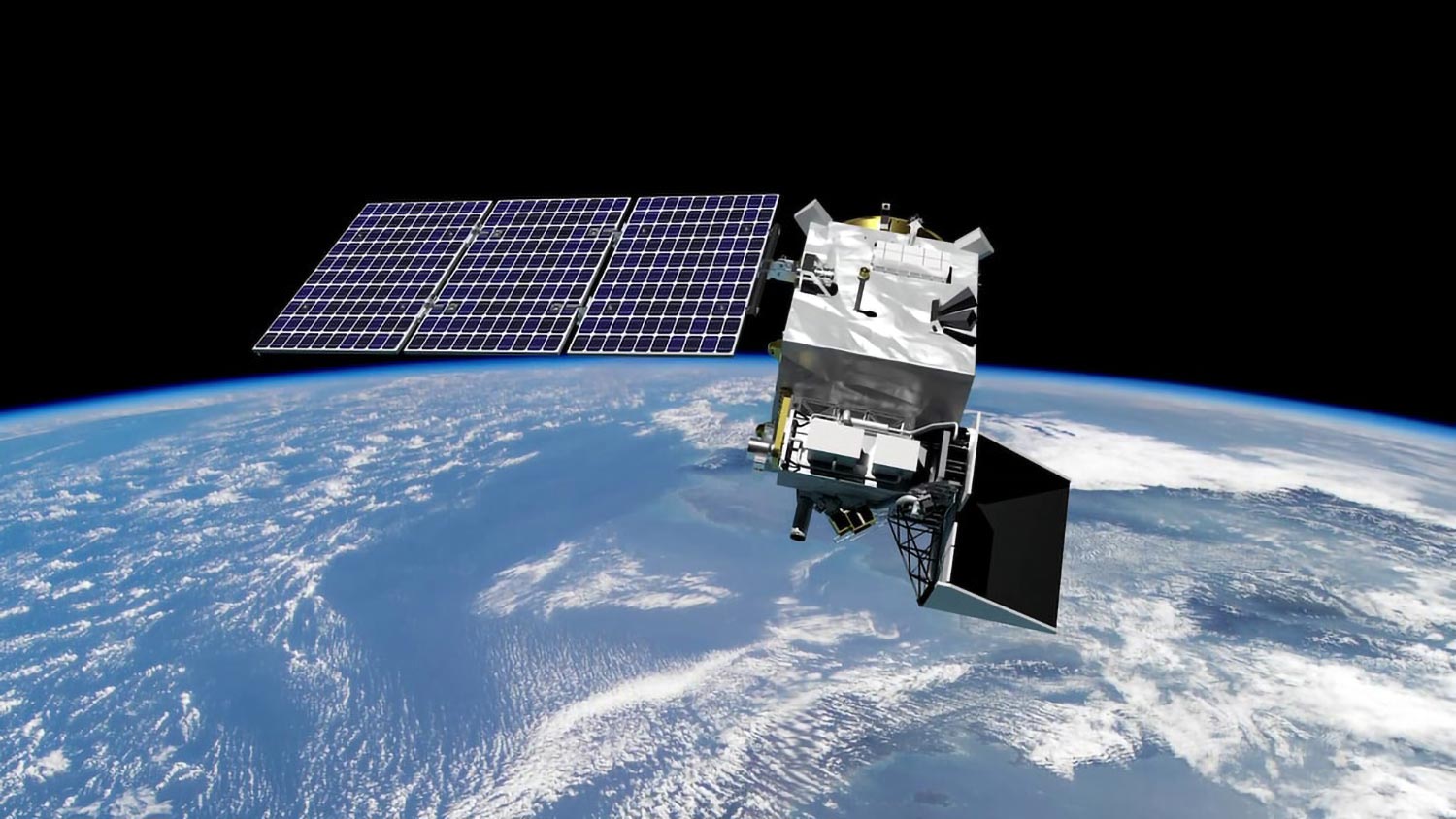
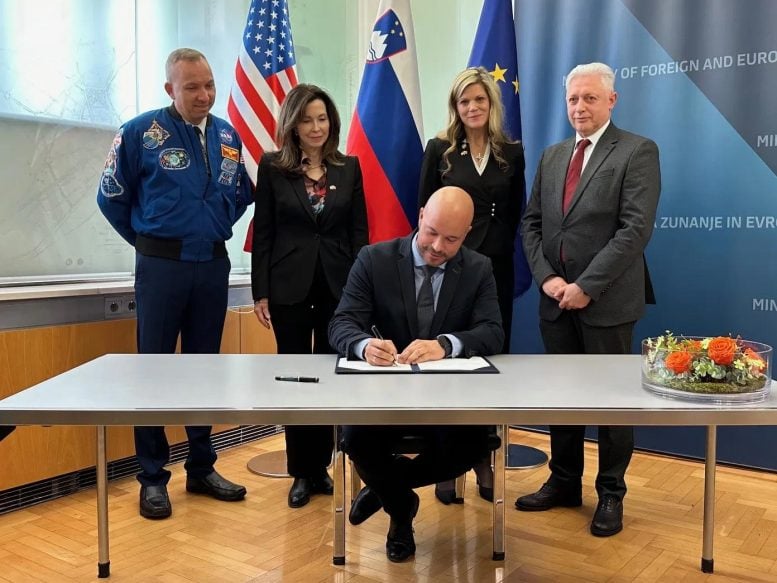
Matevž Frangež, State Secretary, Ministry of Economy, Tourism, and Sport signs the Artemis Accords on behalf of Slovenia with NASA astronaut Randy Bresnik, Ambassador Jamie L. Harpootlian, Rebecca Bresnik, Associate General Counsel for International and Space Law, and Slovenian Ambassador to the United States Iztok Mirošič standing behind. Credit: State Department
More partners in space exploration …
New data measuring ocean health, air quality, and our climate …
And an upgrade to testing facilities for Artemis II …
A few of the stories to tell you about – This Week at NASA!
NASA Welcomes New Partners to the Artemis Accords
On April 15th, Switzerland became the 37th country to sign the Artemis Accords. NASA Administrator Bill Nelson, and Guy Parmelin, Swiss Federal Councillor and Minister for Economic Affairs, Education & Research, participated in the signing ceremony at NASA Headquarters. On April 16, Minister for Education Mats Persson signed the Artemis Accords on behalf of Sweden at an event in Stockholm. On April 19th, Slovenia joined the Artemis accords at a ceremony in Slovenia.
The Artemis Accords establish a set of principles to guide space exploration among nations for the sustainable and beneficial use of space for all humankind.
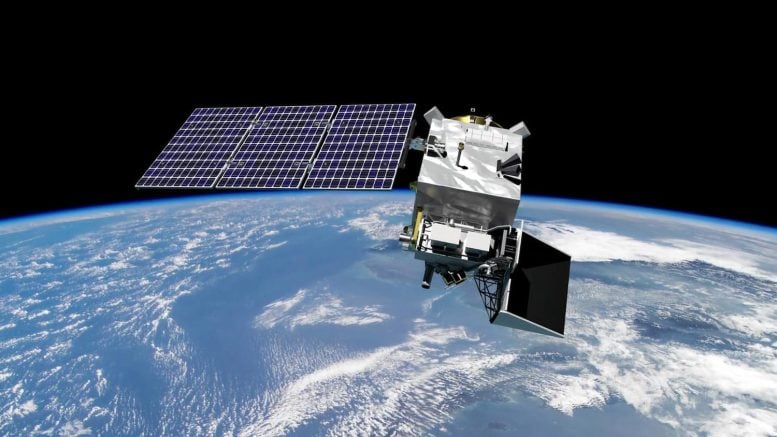
NASA’s PACE (Plankton, Aerosol, Cloud, ocean Ecosystem) spacecraft in orbit over Earth. Credit: NASA GSFC
NASA’s PACE Data on Ocean, Atmosphere, and Climate Now Available
NASA’s newest Earth-observing satellite released first-of-their-kind measurements of ocean health, air quality, and the effects of a changing climate. PACE, the Plankton, Aerosol, Cloud, ocean Ecosystem satellite, will allow researchers to study microscopic life in the ocean and particles in the air.
PACE data will advance our understanding of issues including fisheries health, air pollution, and wildfire smoke. To learn more and access PACE data, visit pace.oceansciences.org.
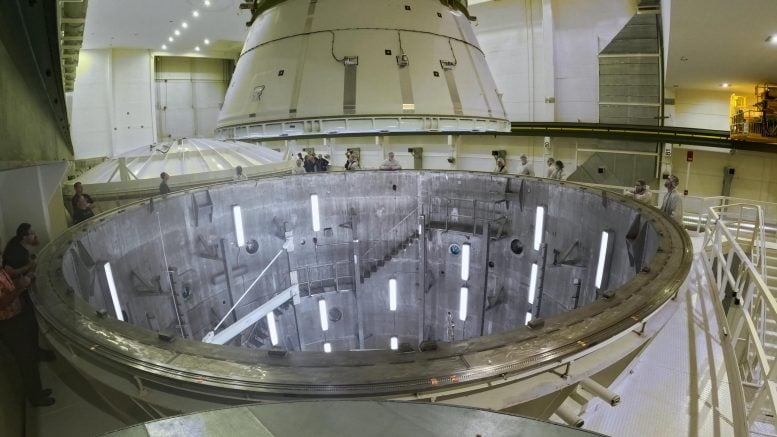
As NASA prepares for the Artemis II mission, the Orion spacecraft is undergoing rigorous testing at Kennedy Space Center’s updated altitude chamber. The testing sequence, which assesses electromagnetic compatibility and simulates high-altitude conditions, is a crucial step in ensuring Orion’s readiness for lunar exploration. Credit: NASA’s Kennedy Space Center
Altitude Chamber Gets an Upgrade for Artemis II
Teams at NASA’s Kennedy Space Center have made significant upgrades to the altitude chamber where testing for the Orion spacecraft will occur. The altitude chamber was upgraded to simulate an altitude of up to 250,000 feet. Before the Artemis II mission, engineers will put the Orion spacecraft through a series of rigorous tests to ensure it is ready for flight.
NASA’s Artemis II mission will carry four astronauts aboard the Orion spacecraft on a flight around the Moon and back to Earth.
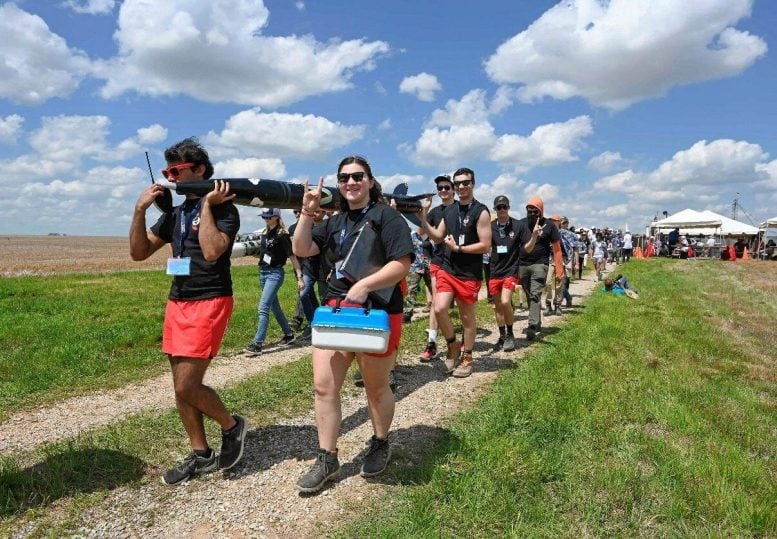
Hundreds of students from across the U.S. and Puerto Rico launched amateur rockets near NASA’s Marshall Space Flight Center in Huntsville, Alabama, during the Agency’s 2023 Student Launch competition. Credit: NASA/Charles Beason
NASA’s 2024 Student Launch Challenge
NASA’s 2024 Student Launch Challenge brought students from colleges, universities, high schools, middle schools, and informal education groups to launch amateur rockets and payloads on Saturday, April 13 near NASA’s Marshall Space Flight Center.
Student Launch provides relevant, cost-effective research and development of rocket propulsion systems and reflects the goals of NASA’s Artemis campaign, which seeks to put the first woman and first person of color on the Moon.
That’s what’s up this week @NASA.